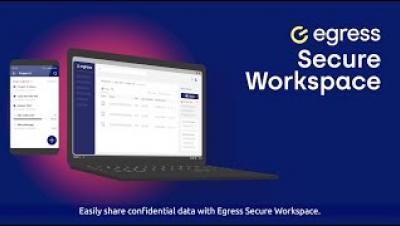Security | Threat Detection | Cyberattacks | DevSecOps | Compliance
Email Security
Egress Protect
Egress Secure Workspace
Laptop running slow? You might have been cryptojacked.
It’s always frustrating when your laptop starts to slow down. The more you click, the more it seems to stutter and have a good think about everything you ask it to do. Joining video calls and even opening documents becomes a chore. Normally, this is a sign to free up some storage space or request a new device/component from the IT department. However, an unusually slow laptop can also be the sign of something more sinister – cryptojacking.
Real-life Examples of Phishing Emails
Phishing emails are a serious problem for both businesses and consumers. Phishers use phishing emails to steal users’ personal information, like usernames, passwords, credit card numbers, social security numbers and other sensitive data.
Minimize Email Phishing Scams with SafeAeon Email Security-as-a-Service
COVID-19 Phishing Lure to Steal and Mine Cryptocurrency
Recently, we observed a malware spam campaign leveraging the current COVID-19 situation. The emails were sent from a compromised mailbox using a mailer script. The message contains a link leading to a Word document. The email takes advantage of a COVID-19 test mandate as a pretext to lure the unsuspecting user into clicking the link and downloading the document. Figure 1. COVID-19 themed malspam with link to the malicious document.
Four cybersecurity predictions for 2022
2021 has been another challenging year for businesses, not least because of the ongoing wave of cyberattacks. Everyone is hoping for some good news in 2022, but realistically, cybercrime slowing down won’t be on the agenda. Cybersecurity and avoiding the threat of data breaches is going to be front of mind for many going into next year. We’ve spoken to two members of our leadership team who’ve shared their thoughts on four trends we’re likely to encounter in 2022.
Four cybersecurity predictions for 2022
2021 has been another challenging year for businesses, not least because of the ongoing wave of cyberattacks. Everyone is hoping for some good news in 2022, but realistically, cybercrime slowing down won’t be on the agenda. Cybersecurity and avoiding the threat of data breaches is going to be front of mind for many going into next year. We’ve spoken to two members of our leadership team who’ve shared their thoughts on four trends we’re likely to encounter in 2022.
Easily Find and Secure Sensitive Data in Gmail with Egnyte
Gmail is an immensely popular service, with nearly 2 billion active accounts. And as the service has grown, businesses have turned to it for all kinds of things it was never meant to do: user authentication, password recovery, and perhaps most problematic, the passing of sensitive or regulated data between parties.










